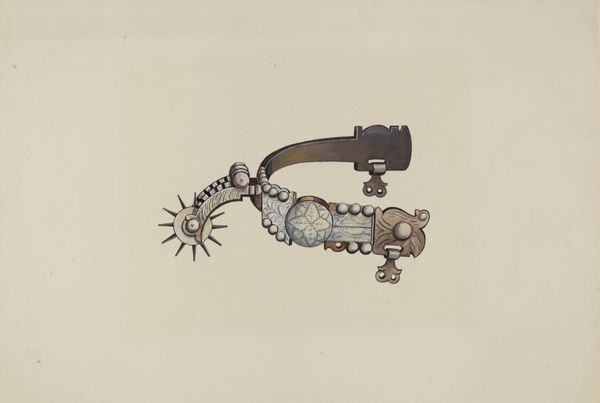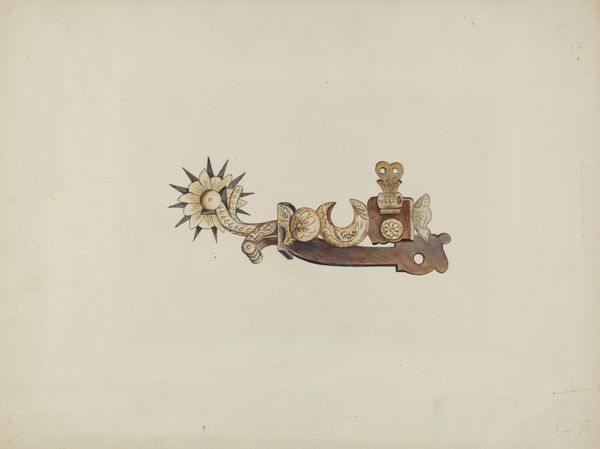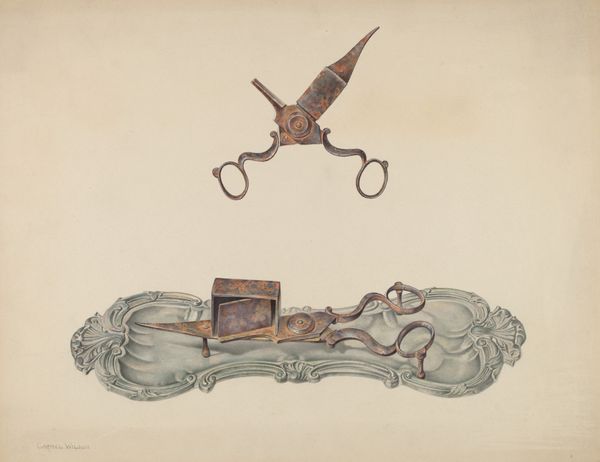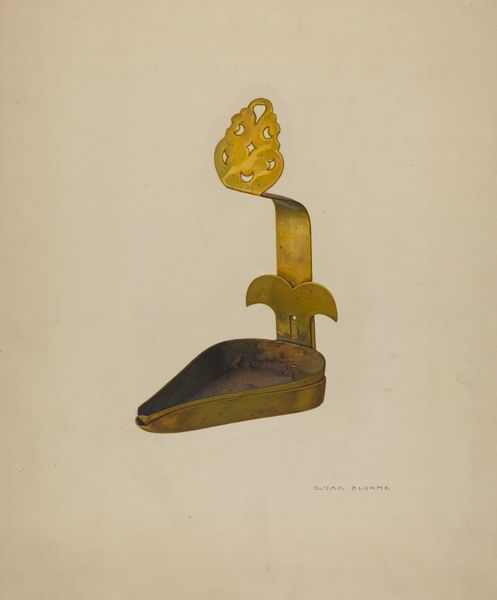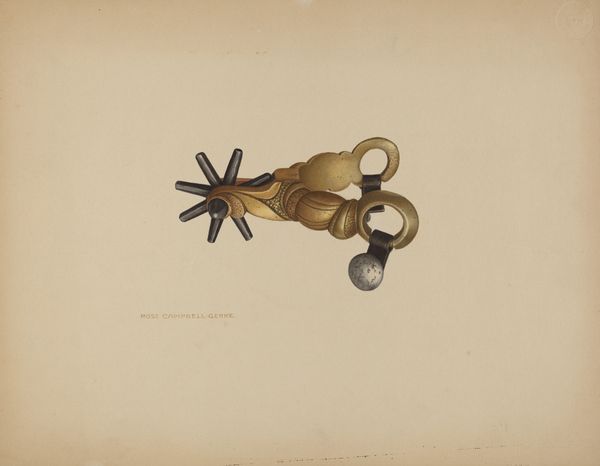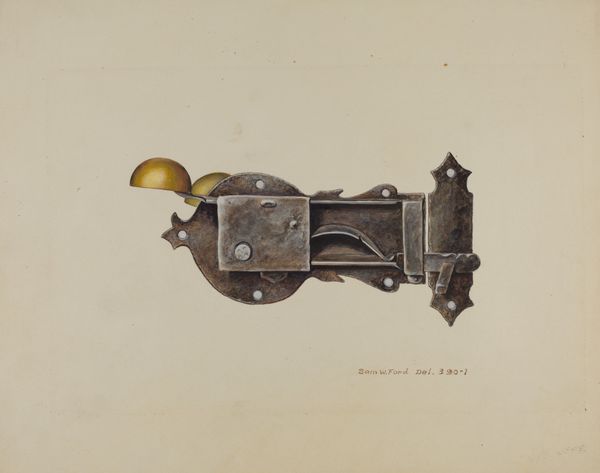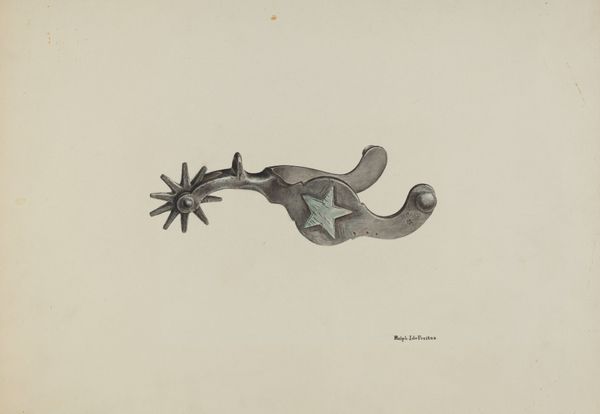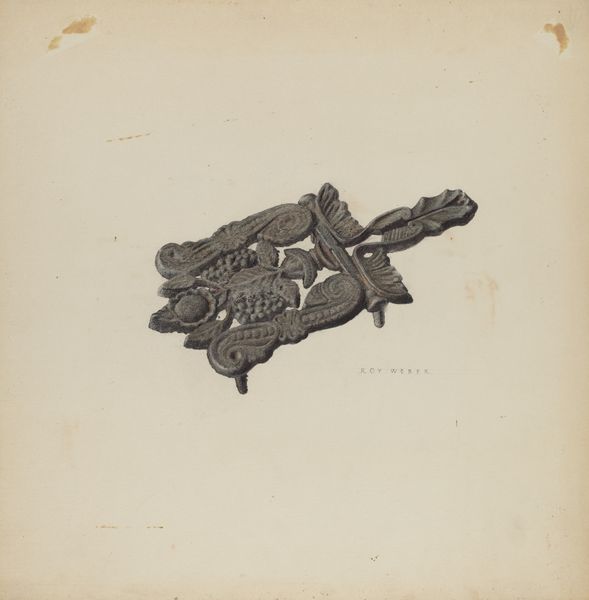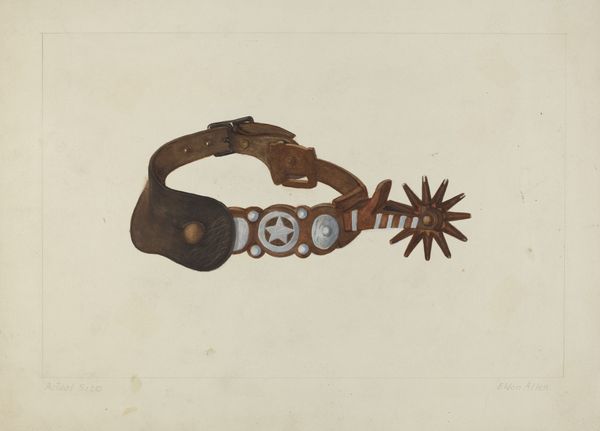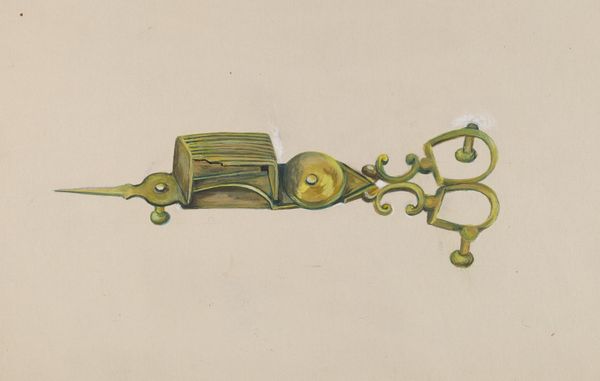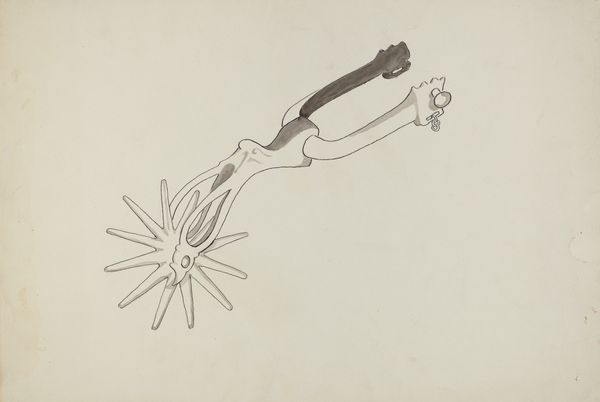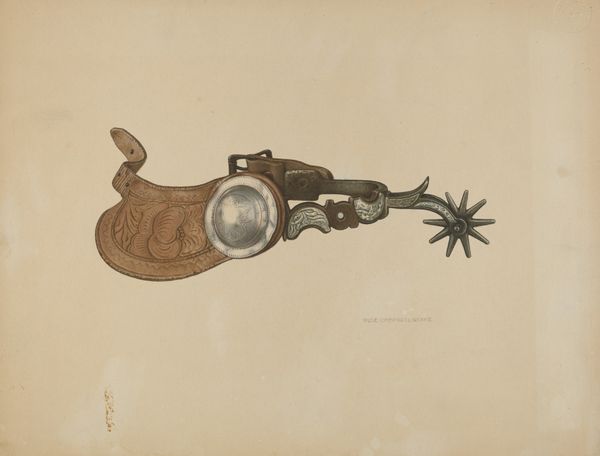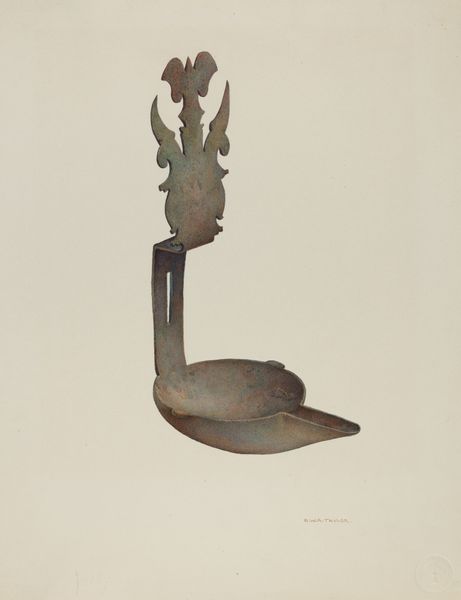
drawing, watercolor
drawing
watercolor
realism
Dimensions: overall: 24.6 x 35.5 cm (9 11/16 x 14 in.)
Copyright: National Gallery of Art: CC0 1.0
Curator: What strikes you immediately about this image? Editor: It feels almost… delicate? For something that's meant to be attached to a boot and used to control an animal, it has surprisingly intricate details. Curator: Indeed. This is a watercolor and pencil drawing entitled "Spur," created around 1936 by William Hoffman. Editor: So, the question becomes: is this drawing made for technical purposes, perhaps part of a manufacturing design? Or does the detailed watercolor elevate it? Curator: The date certainly gives some clues. It's likely related to the Works Progress Administration during the Depression. Artists were often employed to document material culture, celebrating American crafts and trades. This drawing might be part of that initiative, aimed to visually preserve details of craftsmanship, possibly due to the loss of production scale as more factories and mass production became normal. Editor: I see that angle. Because look at the materials he’s representing – the leather of the strap, the different metals with various surface treatments, not to mention the precision required to shape these. I wonder what specific tools were needed to form these curves. It points towards specialized knowledge. Curator: Absolutely. The image itself becomes a kind of artifact, documenting the process and skill involved in creating a functional yet aesthetically pleasing object of daily use. But the cultural status of “craft” can still be undermined as it is made invisible to favor other productions. Editor: But the artist chose to capture this level of craftsmanship… Why do you think Hoffman centered this specific item? Was it about its economic significance, its beauty, or the skills embedded in its crafting? Curator: Likely a combination. Spurs, beyond their utilitarian purpose, held symbolic weight in Western culture— power, skill, and tradition are often conveyed through it. Editor: Very good points, both of you. It gives a whole new depth. Thank you both. Curator: A pleasure.
Comments
No comments
Be the first to comment and join the conversation on the ultimate creative platform.
